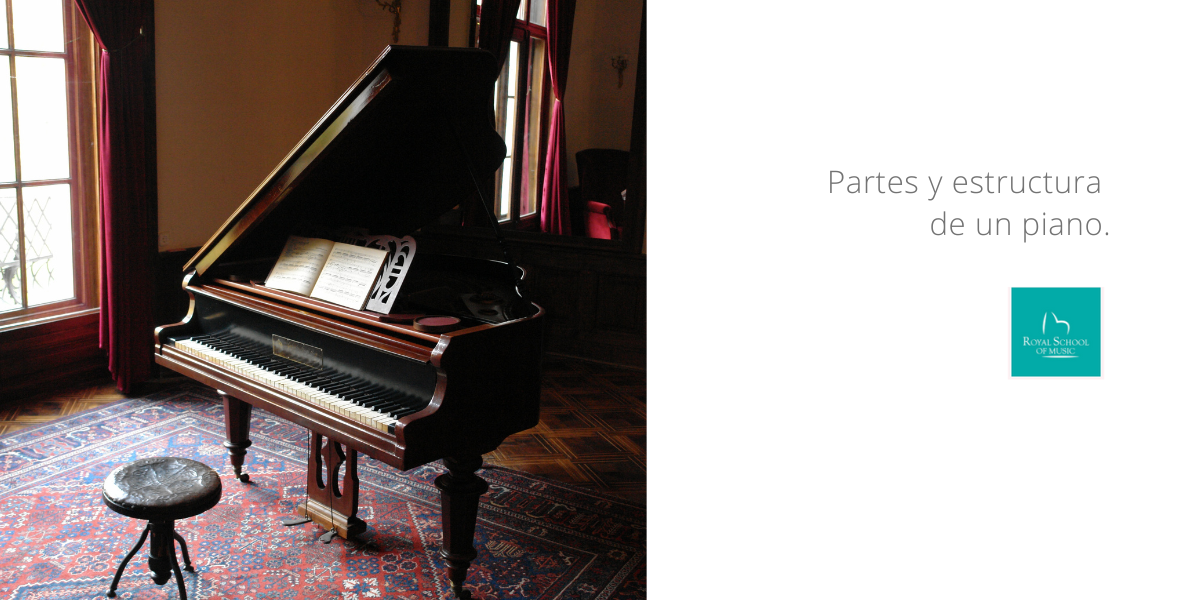The Structure And Parts Of A Piano

A piano is one of the most traditional musical instruments and has been regarded as having one of the most complete sounds of any instrument since as early as 1720.
In every country of the world, buying a piano is considered a symbol of class and elegance.
Before purchasing a piano it is advisable to learn a little more about this fantastic instrument.
What Are Its Main Components?
The classical grand piano has many parts; hammers, strings, and separate tools that fulfill a specific function and are very different from the other pieces. Mainly, it has a percussion mechanism, consisting of strings, pedals, soundboard and most importantly the keyboard.
The Percussion Mechanism
This is the part of the instrument that has the most parts. It is made up of a set of levers and systems that allow the player to control the details of the final sound such as timing, frequency and intensity.
Strings
Traditionally made of steel, there are 224 strings that create sound when struck by the hammers which move once the keys have been pressed. The strings are under tension and they have different thicknesses and lengths which create higher and lower sounds.

Pedals
The pedals are located in the lower part of the casing. They are used to lengthen or shorten a performed note. Depending on the type of piano there can be three pedals which each have different functions; the sustain pedal which causes a note to be sustained for longer is always present. The remaining ones are the pitch pedal and the soft or una corda pedal.
Casing Or Body
This has three sub-parts; the sound board located below the strings; the frame, made of steel, which supports the strings at the ends; and the upper board or lid, which can be opened or closed to allow the volume to be regulated during performances. This body of space is, where the strings resonate and the sound is amplified.
Keyboard
There are 88 keys, 52 white and 36 black. This part forms the link between the musician and their instrument. Each key produces a different sound and can be played as a group or independently. When the musician presses the keys, they activate the percussion mechanism, the hammer striking the string, which produces the notes that the audience hears.
Instrument Maintenance
Every musical instrument requires regular maintenance. In the case of pianos there are three important aspects to focus on: the keyboard, tuning and finishes.

Keyboard
By always ensuring the players hands are clean and grease free before playing, the keyboard will stay cleaner and in a better state for longer. From time to time it is a good idea to clean the keys using a soft cloth that can contain detergent or neutral soap.It is not recommended to use alcohol to clean the keys since this can cause cracks and damage to the surface. Dust can be one of the enemies, so using a handheld vacuum on the keys at least once every three months, depending on exposure, is beneficial.
Tuning
The tension of the strings ranges from 75 to 90 kg, which means they are constantly under high pressure. This pressure can cause the strings to expand, which in turn causes the piano to become out of tune. This frequently happens when the piano is not used regularly and so can be avoided by daily playing. Regardless of use, a piano should be tuned twice a year and unlike a violin or guitar, which are also stringed, always tuned by an expert. Tuning a piano is an incredibly difficult skill to learn and so should be left to a professional piano tuner to maintain the instrument as new.
The Finishes
The finishes are the decorative parts of the instrument. They are usually made of wood, which can be damaged if exposed to water. Using a soft cloth, lightly sprayed with neutral disinfectant, is the best method to clean the casing. Some can be maintained with polish or wax, to retain a high shine.

If in doubt, any maintenance should be carried out by an expert following the instructions issued by the seller.
Dust can also contribute to instrument damage, so it is recommended to follow the instructions that came with the keyboard.
Buying A Piano
Learning to play a musical instrument requires skill, discipline and passion, so the earlier a child can start playing the better. For an adolescent or child, it is an opportunity to expand their knowledge and create future possibilities in the world of music.
Buying a piano is an investment that will undoubtedly provide manymoments of satisfaction and fulfillment.



